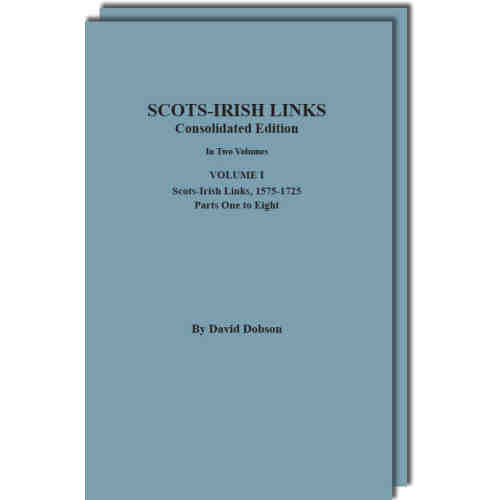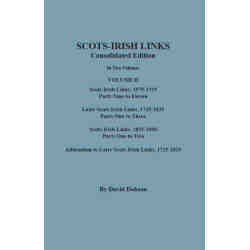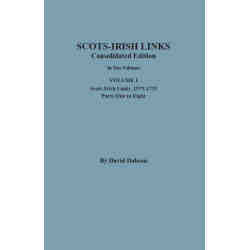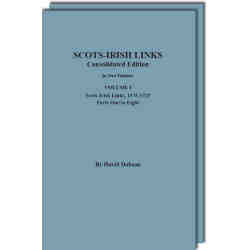This book is the result of nearly thirty years of intermittent research in archives and libraries throughout the United Kingdom. David Dobson’s interest in the subject of the Scots-Irish directly stems from his research into the Scottish Diaspora, which began with Directory of Scots Banished to the American Plantations, 1650-1775, a volume published by Genealogical Publishing Company in 1983. The success of this book led to further research, initially into Scottish emigration to North America and later extended into global destinations and further publications.
The Plantation of Ulster by Scots in the seventeenth century is a well-known established fact; however, family historians, require very specific reference material which is generally missing from the published accounts of the migration and settlement of thousands of Scots beginning in 1606. While most of the settlers were from the Scottish Lowlands, some, especially in the late sixteenth century, were Highlanders. It should also be noted that although Presbyterians were in the majority, there was a sizable minority who were Episcopalians, and a few Roman Catholics. Also, although the main area of settlement was in Ulster, it is evident that a number settled further south, including in Dublin. The emphasis of Scottish emigration changed in the eighteenth century, from European destinations such as Ireland and the Netherlands, to North America and the Caribbean. This century also saw the marked increase of emigration from Ireland to North America, notably of the Scots-Irish, the subject of this consolidated edition.
In order to accumulate references into the Scots-Irish, alias the Ulster Scots, the author undertook research in the National Records of Scotland, the National Library of Scotland, the Public Record Office of Northern Ireland, the National Archives of the UK, and the University of St Andrews. Specific sources included wills, testaments, deeds, sasines, port books, rent rolls, family papers, burgess rolls, apprenticeship records, estate papers, church records, monumental inscriptions, university registers, contemporary journals, newspapers, government records and various publications. Dr. Dobson’s references to those sources identify the manuscript or published work, volume and folio number, or the archive, as well as the documentary details.
Take the entry under John Crichton dated 1694 which reveals that he was residing in Achlane, County Armagh, the son of Robert Crichton of Ryehill in Dumfriesshire, and his wife Agnes McBrair, who was involved in a property transaction in Dumfriesshire. The source citation reads SRO [i.e. Scottish Record Office, now the National Records of Scotland], RS22 [signifies the Register of Sasines, for the Sheriffdom of Dumfries], volume 5, folio 174, while the document details the land or building involved, the names of the vendor and purchaser, and the value of the property, possibly with names of neighbouring proprietors and witnesses – all items of interest to a family historian.
This consolidated edition improves upon the original booklets in a number of respects. These contents were originally published in 15 parts as follows: Scots-Irish Links, 1575-1725 (11 parts); Later Scots Irish Links, 1725-1825 (3 parts), and Scots-Irish Links, 1825-1900 (1 part). Staying abreast of announcements of all books in the series has posed a problem for some genealogists. Also, Dr. Dobson arranged the roughly 15,000 Scots-Irish subjects found in the original volumes in alphabetical order; consequently, he did not add an index at the end of each volume. As the two series grew, the omission of indexes posed three problems for researchers: (1) The necessity of searching multiple volumes for the identity of an ancestor and (2) The inaccessibility of the identities of other persons named in the alphabetically arranged entries, e.g., spouses, parents, children, ships captains, and so forth. To rectify these shortcomings, we have now attached a full-name index to the back of each of these consolidated volumes, providing the reader with an easy way of identifying everyone found therein and–especially in the case of institutional collections–assembling all the information in one convenient place. Finally, this consolidated work represents the single greatest compilation of the participants in the Plantation of Ulster and their descendants. It is available as a two-volume set at a discounted price, or by individual volume.




